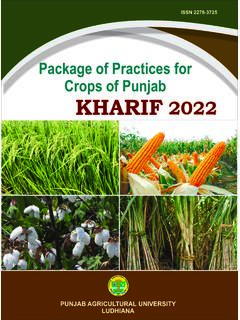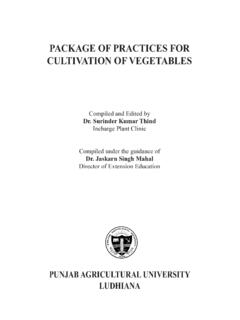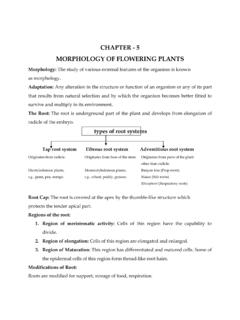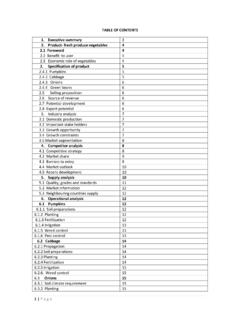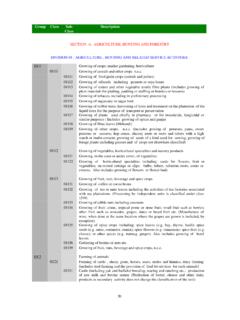Transcription of PACKAGE OF PRACTICES FOR CULTIVATION OF FRUITS
1 PACKAGE OF PRACTICES . FOR CULTIVATION OF FRUITS . Compiled and Edited by Dr. Surinder Kumar Thind Incharge, Plant Clinic Under the guidance of Dr. Jaskarn Singh Mahal Director of Extension Education PUNJAB AGRICULTURAL UNIVERSITY. LUDHIANA. The ' PACKAGE of PRACTICES for CULTIVATION of FRUITS - 2021' contains the latest recommendations and readily-usable information provided by the PAU specialists on FRUITS through the coordination of the Director of Research. These improved farming techniques for stepping up productivity of FRUITS have been discussed and finalised in 'Virtual Research & Extension Specilist's Workshops on Horticultural Crops' held on 7.
2 January, 2021 (Winter) and 6 July, 2021 (Summer). It is purposely written in a simple and easy-to-understand language because these recommendations are intended for the use of field level extension workers and the fruit growers of Punjab. ISBN : 978-93-86267-00-9. Price per copy : Rs. Printed and Published by Additional Director of Communication for Punjab Agricultural University. Printed at PAU Printing Press, Ludhiana (July, 2021). CONTENTS. 1. Introduction 1. - General Recommendations 2. - Planting of Orchards 4. 2. citrus 13. 3. Guava 35. 4. Mango 45. 5. Pear 56. 6. Ber 65. 7. Litchi 72. 8. Peach 77. 9. Grape 88. 10. Amla 99. 11. Plum 101. 12.
3 Banana 108. 13. Sapota 112. 14. Papaya 115. 15. Pomegranate 119. 16. Strawberry 122. 17. Phalsa 126. 18. Loquat 127. 19. Fig 131. 20. Date Palm 133. 21. Bael 136. 22. fruit Nutrition Garden 138. 23. Mushroom CULTIVATION 140. 24. Beekeeping 146. 25. PAU fruit fly traps 154. 26. Management of other horticultural pests 156. Appendix I to XII 162-188. I. Fertilizer source for the supply of nitrogen, 162 phosphorus and potassium II. Instruction for proper use of drip irrigation system 164. in orchards III. Use of tractor operated pick positioner for 167. harvesting of FRUITS and pruning of trees IV. Tractor operated offset rotavator 169. V. Waiting periods of different pesticides in fruit and 170.
4 Vegetables crops VI. General recommendations regarding safe use 171. of pesticides VII. Some other first aid measures 174. VIII. Antitodes of pesticides for human beings 176. IX. List of pesticides restricted or banned in 180. the country X. Proforma for referring sample to Plant Clinic, 182. PAU, Ludhiana for diagnosis of disorders XI. Important telephone numbers of PAU for the 183. convenience of the farmers XII. Scientific names of fruit crops 188. Important Notice The information on performance of recommendations given in this book holds good only when used under optimum conditions. Their performance may either change in due course of time due to several factors or can vary under different systems of management.
5 Mishandling/negligence of the user can also result in damage/loss/non- reproducibility of results. In this regard, The Punjab Agricultural University accepts no legal responsibilities. CAUTION. Chemicals used to control insects, diseases and weeds are poisons for human beings. Farmers are cautioned to use these poisons carefully to avoid any effect on human health. For safe use of these chemicals see Appendix III. given at the end of this book. Note : 1. For proper presentation of information on pesticides, fungicides, etc., it is sometimes necessary to use the trade name of the product or equipment. No endorsement of the named product or equipment is intended nor criticism implied of a similar product or equipment not mentioned in this book.
6 2. Volume of spray material to be used for controlling different insects and diseases of various crops is based on the usage of shoulder-mounted knapsack sprayer having fixed type hollow cone nozzle. Spray volume may vary when other types of sprayers/nozzles are used for this purpose. 3. It should, however, be ensured that the actual amount of insecticides recommended in the PACKAGE of PRACTICES should not be reduced. For proper control of weeds, it is always necessary to use flood jet or flat fan spray nozzles. 4. The use of endosulfan 35 EC is not recommended till the decision of Hon'ble Apex Court. NEW RECOMMENDATIONS. fruit VARIETIES. Strawberry Chandler (2021): It is mid-season cultivar giving FRUITS from first week of February to first week of April.
7 FRUITS are medium sized, conical to sometimes long flat glossy with attractive skin. Flesh colour is deep red. Average fruit weight is g, TSS %, acidity % and TSS/acid ratio Average yield is about 260 g/plant. Winter Dawn (2021): It is early maturing cultivar giving FRUITS from mid January to end of March. FRUITS are large, medium conical to wedge shaped with deep red and glossy skin. Flesh color is dark red. Average fruit weight is g, TSS %, acidity % and TSS/acid ratio Average yield is about 290 g/plant. PRODUCTION TECHNOLOGY. Leaf sampling of Litchi orchard for nutrient status: For leaf analysis collect 50 leaves having 4-5 months age from middle of 2nd and 3rd pair leaflets from terminal apex of shoot of litchi plant.
8 Soil application of potash in Kinnow mandarin for sub-mountain and central zones of Punjab: Soil application of of muriate of potash 185g per tree per year of age upto 7years and 1465 g every year per tree after 8 years of tree age can be made along with farm yard manure. Bagging of Litchi bunches for quality production: The bagging of litchi fruit bunches with white and pink polypropylene non-woven bags at 25-30 days after fruit set provide physical protection against fruit nut borer and also improves fruit quality. Strawberry CULTIVATION : Complete PACKAGE of PRACTICES for CULTIVATION of strawberry in Punjab including varieties, propagation , time of planting, irrigation, fertigation, harvesting and marketing have been standardized.
9 PLANT PROTECTION. Management of citrus foot rot with Trichoderma asperellum: Apply 100 g Talc based bio-formulation of Trichoderma asperellum mixed with kg FYM per plant one week after the spray of Sodium hyphoclorite at foot and basin region of the plant during Feb-March and July August. Control of Mango powdery mildew with Contaf 5 EC: The disease can be managed by giving three sprays of Contaf 5. EC (hexaconazole) @ 1 ml/litre water before flowering, during flowering and after fruit set. Integrated management of Grape Chafer beetle or white grub: Clean CULTIVATION , ploughing around the trees during winter, irrigation of orchard as per recommended schedule and fixing Anisole based PAU Chafer Beetle Trap @12 traps/acre at ground level during last week of April helps in managing the chafer beetles.
10 POST HARVEST MANAGEMENT. Harvesting and marketing of Strawberry: Harvest strawberry FRUITS at entirely red (ripe) stage and pack them in 200 g punnets which should be further packed in corrugated fiber trays or ventilated cardboard boxes. Strawberries can be stored at 5 10C; 90-95 % RH for 6-9 days and at ambient conditions up to 2 days. Lacto-fermented Indian Gooseberry/Amla beverage: The bioprocess was optimized by fermenting the blend of Indian Gooseberry juice (Indian gooseberry juice (2): Ginger (1): Guava juice (2)) water 1:3 and salt (condiment) @ followed by pasteurization at 55 C for 15 seconds with functional starter culture (consortia of ten allochthonous lactic acid bacteria @ (w/v)) by incubating at 37 C for 24 hrs.
